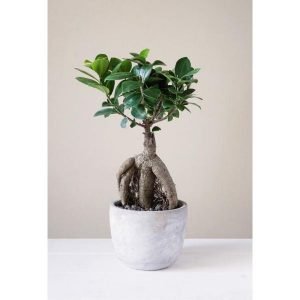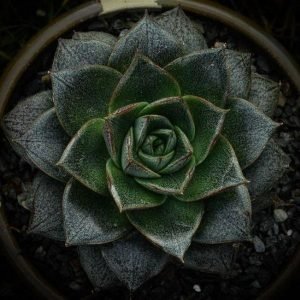Subtotal: ₹525.00
FICUS BONSAI tree , Ficus retusa tree
1) Name of Plant ( common Name/ scientific name)- Ficus Bonsai / Ficus retusa
2) Type of plant (Indoor/outdoor)- Indoor
3) Size of pot it comes in- 5 inches
4) Seasonal/ perennial- Perennial
5) Flowering/ Foliage – Foliage
6) Place to keep- Filtered light
10 in stock
₹910.00 ₹3,800.00
10 in stock
-
All Plants, Bonsai, Gift Pack, Gift Section, Indoor Plants
FICUS BONSAI tree , Ficus retusa tree
-76% All Plants, Bonsai, Gift Pack, Gift Section, Indoor Plants
All Plants, Bonsai, Gift Pack, Gift Section, Indoor PlantsFICUS BONSAI tree , Ficus retusa tree
1) Name of Plant ( common Name/ scientific name)- Ficus Bonsai / Ficus retusa
2) Type of plant (Indoor/outdoor)- Indoor
3) Size of pot it comes in- 5 inches
4) Seasonal/ perennial- Perennial
5) Flowering/ Foliage – Foliage
6) Place to keep- Filtered lightSKU: n/a -
All Plants, Bonsai, Gift Section, Indoor Plants
BANYAN TREE BONSAI , Ficus tree
1) Name of Plant ( common Name/ scientific name)- Banyan tree / Ficus
2) Type of plant (Indoor/outdoor)- Outdoor
3) Size of pot it comes in- 5 inches
4) Seasonal/ perennial- Perennial
5) Flowering/ Foliage – Foliage
6) Place to keep- Bright indirect lightSKU: n/a
Ficus Bonsai
Description of Ficus Bonsai
Also known as the common Fig and Chinese Banyan, this ficus bonsai tree grows naturally in Southwest Asia. There are hundreds of species, most of them tropical and evergreen, although some are deciduous. Many varieties are natural dwarfs. Ficus is one of the most popular trees for indoor Bonsai. It is an excellent tree for beginners and pros alike. Virtually care free; they tolerate low light and humidity of a heated or air-conditioned house. The “banyan” style roots are commonly trained in a root-over-rock style.
Location:
Ficus bonsai can be grown indoors, close to a sunny window, or outdoors year-round in warmer climates. Direct morning sunlight is preferable; direct afternoon sun can sometimes burn the delicate leaves. Ficus trees don’t like cold drafts and, are not fond of sudden changes. Make moves gradually. Use a humidity tray under your bonsai to keep humidity levels up. Ficus that live outdoors should be protected from frost and/or freezing temperatures.
Watering:
Ficus Bonsai trees live in small pots and their world dries out much quicker than plants in the ground or in bigger pots, so close attention should be paid to watering. Check and water your bonsai every day. Striking a balance between not enough water and too much water can be a bit tricky but is very important. Water thoroughly and deeply when it needs water and let it catch its breath before watering again. An old bonsai watering trick is to place the entire pot in a sink of water an inch or two deep and let the water absorb from the holes in the bottom of the pot. Another favorite way to know if it needs watering is to lift it. You can get a sense for whether it needs watering by its weight.
An inexpensive moisture meter takes the guesswork out of watering. Water slowly so it absorbs into the dirt, otherwise the water will run all over your table. Mist occasionally with a spray bottle too. It helps take the burden off of the roots especially when it’s very hot and dry out. We pot our bonsai trees specifically to drain well, so it’s almost impossible to over water.
Misting:
Leaves want humidity to keep them green and healthy. Any time your tree is inside, the air is very dry. Mist often during the day. Avoid putting your Bonsai near a draft or vent, which dries out the foliage. A humidity tray is a great way to increase humidity. These shallow trays filled with small stones have water in the bottom of the tray. Make sure the water does not reach the bottom of the Bonsai pot. As the water evaporates, it creates a moister environment.
Fertilizer for Ficus Bonsai:
Fertilizing a bonsai is essential to its health because the nutrients in the soil leave very quickly with the water. When new growth appears in the spring it’s time to start feeding your bonsai. Use an organic liquid fertilizer or a chemical fertilizer diluted to one half strength. Fertilize every two weeks during the growing season and once a month in the winter. Ficus responds quickly and enthusiastically to fertilizing; do not skip it.
Pruning:
Ficus bonsai is a very fast grower. Prune back to 2-4 leaves after 6-10 leaves have grown. Ideally, do the heavy pruning in the spring but it can be done year round. Keep the new growth trimmed back during the growing season. When you trim a Ficus, it will bleed a milky, white sap—actually latex. This latex dries quickly and makes a great sealant. When pruning back smaller branches leave a short stub which will dry out over the following days, then just take the dry branch off and it will heal with less of a scar.
Wiring:
Good wiring techniques are used to train Bonsai trees into different shapes and styles. Use the thinnest training wire that will hold the branch in the desired position. DO NOT WIRE A BONSAI JUST AFTER REPOTTING. Wind the training wire in the direction the branch is bent in order to keep the wire from loosening. Wrapping the wire too tightly will cause scarring. Wrap just tight enough to get the job done. Begin at the base of the Ficus Bonsai tree and slowly wrap the wire around the trunk to anchor. Continue along the branch you wish to train. Repeat the process as needed. After about 6 weeks, the branch should be able to maintain the shape on it’s own, and the wire can be removed. Cut the wire carefully from the branch. DO NOT UNWIND WIRES. This could cause the branch to break.
Repotting:
You should repot your Ficus every two years in the spring using a basic soil mix. A good rule of thumb for repotting your Ficus is if you can remove the root/soil ball in one piece and it’s the same shape of the pot, it’s time. After repotting, water thoroughly and place Ficus in a shady location for several weeks so new roots can grow.
Insects and Diseases of Ficus Bonsai
Scale is the most common insect that attacks a Ficus. Scale is usually identified by brown or black bumps on the branches. These bumps contain insects under a protective waxy shell. A very sticky secretion that discolors the branches may also be present. Mites also like to infest the Ficus. Identified by small moving pinpoints of red or brown on branch tips, severe infestations leave “spider webs” on branch tips and yellow leaves all over the tree. Mealy bugs look like whitish cottony areas at the leaf base with some infestations appearing mainly on the roots. These infestations can only be seen during repotting. Ficus will not tolerate insecticides containing Malathion.
Dormant oil is well tolerated on most Figs, at one tablespoon/gallon. Root mealies cannot be treated effectively with oil. This particular infestation will require systemic poisoning. If your Ficus bonsai starts dropping leaves for no apparent reason, the most frequent cause is excessive wetness or dryness. However a sudden draft of cold air or sudden exposure to bright sunlight may produce the same results. Do nothing. Keep Ficus warm and let the soil dry out before watering again and, the plant will re-leaf in 3-4 weeks time.
DISCLAIMER: The content provided in this article is not warranted or guaranteed by Bonsai Outlet. The content provided is intended for entertainment and/or educational purposes in order to introduce to the reader key ideas, concepts, and/or product reviews. We are not liable for any negative consequences that may result from implementing any information covered in our articles or tutorials. Happy bonsai gardening.
Disclaimer : The image is for reference purposes only. The actual product may vary in shape or appearance based on climate, age, height, etc.
| Age | 15 Years |
|---|
Based on 0 reviews
Be the first to review “FICUS BONSAI tree , Ficus retusa tree”
You must be logged in to post a review.

 Echeveria purpusorum : Succulent Plants
Echeveria purpusorum : Succulent Plants  Sheep pot
Sheep pot 









There are no reviews yet.